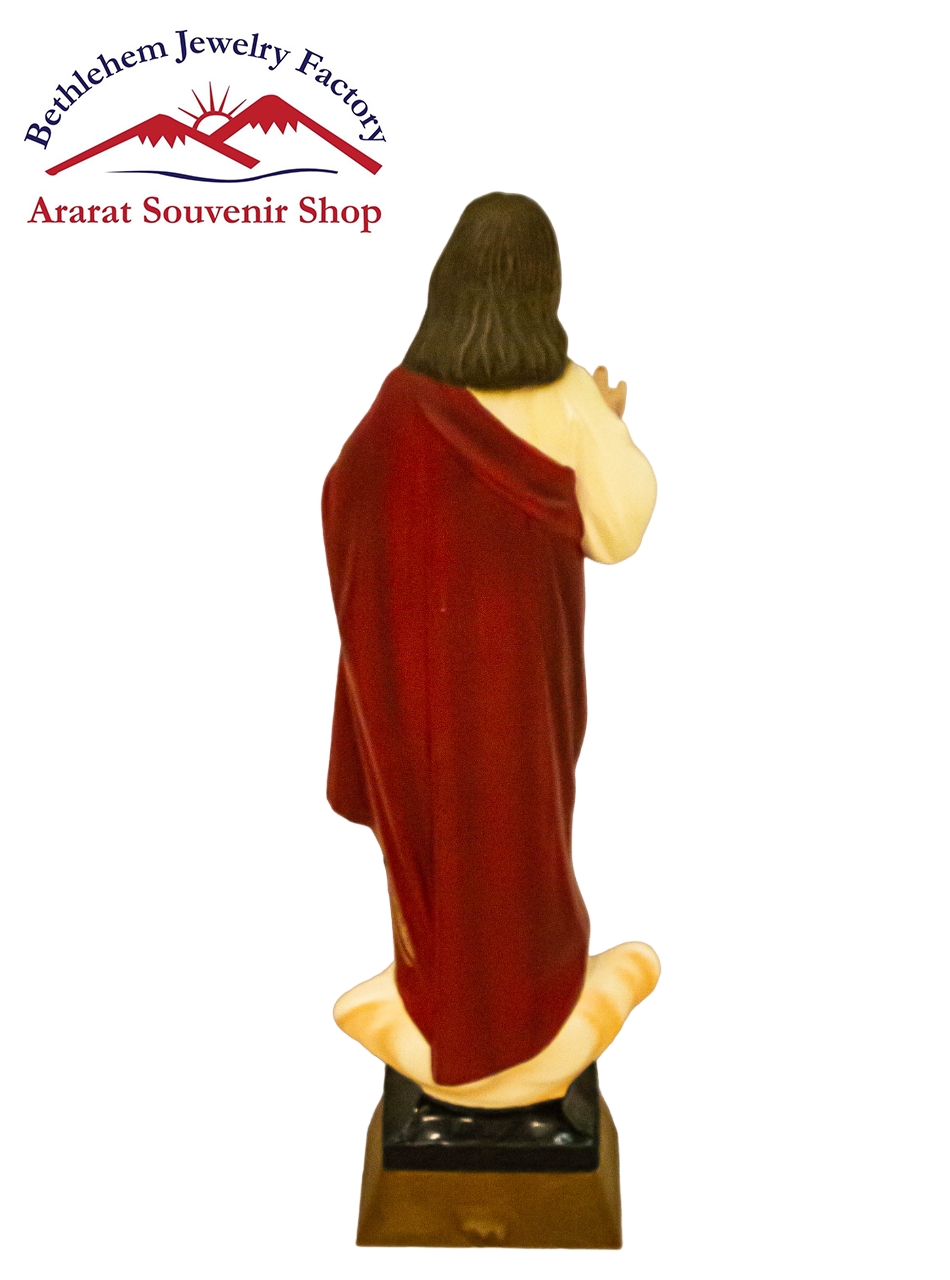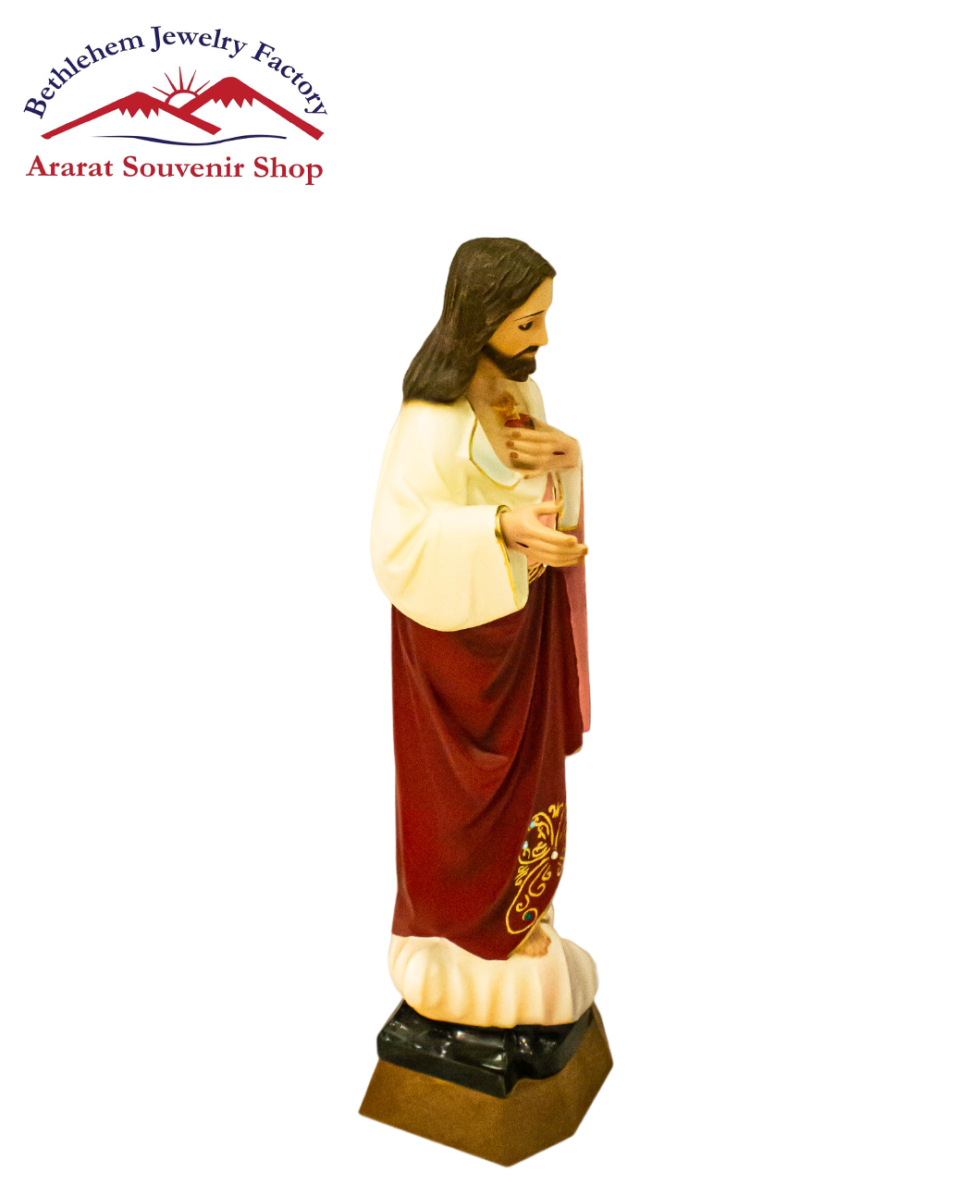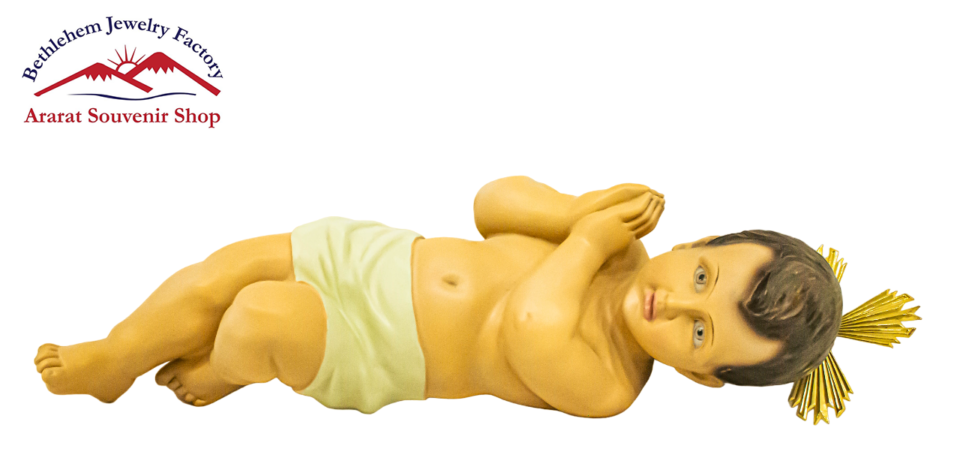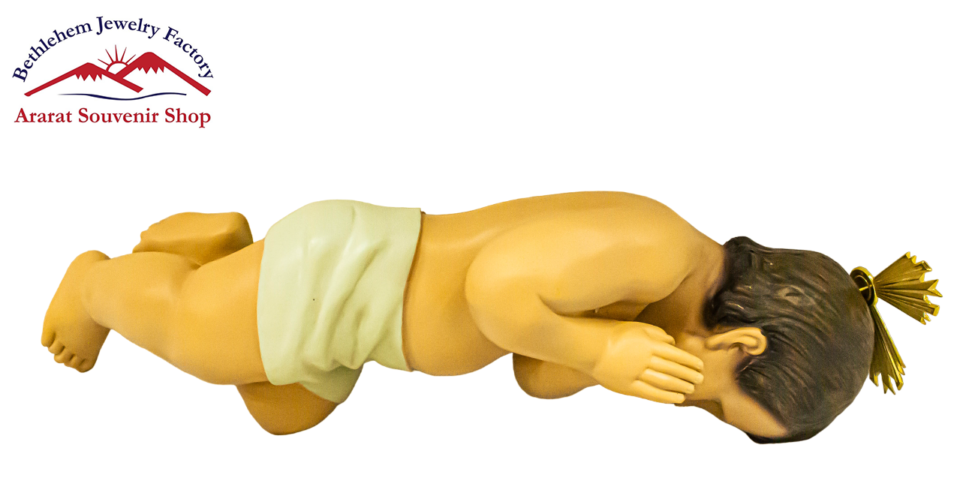Jesus Gypsum
300 $ – 1,300 $
Jesus Gypsum
Product specifications:
- Delivery is available within 15 days
- Brand: Bethlehem Jewelry Factory Holy Land, Israel
- Material: Gypsum (Highly detailed)
- Two Different Sizes
- Made in the Holy Land
You can view the size details by choosing the “small” or “large” option.
Jesus Gypsum
“Baby Jesus in Gypsum” often refers to the artistic depictions of the infant Jesus Christ, particularly in nativity scenes crafted from gypsum, a widely used material for sculptures and decorations. In many cultures, representations of the Nativity hold deep significance, illustrating the moment of Christ’s birth and embodying themes of hope, love, and the sheer miraculous nature of this event. Gypsum, known for its softness and malleability, lends itself beautifully to creating intricate and detailed figures, allowing artisans to capture the essence of innocence and divinity embodied in the baby Jesus.
Gypsum itself is a mineral composed of hydrated calcium sulfate. It is found in abundance in various regions worldwide and has been used for centuries in construction and art. In sculptural contexts, it is easy to carve and mold, making it a favorite medium for artists seeking to create lifelike representations. The versatility of gypsum means that it can be painted, polished, or left in its natural state, allowing artists to convey a range of emotions and characteristics in their sculptures. This adaptability makes gypsum a fitting choice for representing the baby Jesus, whose very essence compels artists to capture both his fragility and his divine nature.
The image of Baby Jesus often evokes profound emotions and serves as an enduring symbol in Christian iconography. Traditionally depicted swaddled in cloth and lying in a manger, the infant is surrounded by Mary and Joseph, embodying the Holy Family in their humble, earthly abode. This simplicity serves as a stark reminder of the humility that Christ embraced upon entering the world, emphasizing a divine presence that chose to be born in lowly circumstances. This theme resonates deeply with many, evoking a sense of compassion for the less fortunate and a call to serve those in need.
Artisan-crafted nativity scenes with figures made from gypsum can be found in homes, churches, and public displays, particularly during the Christmas season. Each piece is often painstakingly crafted, capturing the serene expressions of Mary and Joseph as they gaze upon their child. Their expressions are usually a blend of awe, love, and reverence; artists aim to convey the profound mystery of the Incarnation—the belief that God took on human form in the person of Jesus. Baby Jesus is typically depicted with an ethereal glow, symbolizing his divine nature, which artistically contrasts with the mundane setting of a stable or cave.
In addition to the Holy Family, nativity scenes often include a host of characters such as shepherds, wise men, angels, and animals, each contributing to the narrative around the birth of Jesus. These additional figures add layers of meaning, representing the revelation of Christ to various sectors of society. The shepherds, often seen as the marginalized in society, illustrate the Gospel’s universal message; the eldest kings from the East signify the acknowledgment of Christ’s sovereignty by all nations. Each character plays a role in highlighting the transformative impact of Jesus’ birth, which transcends geographical, social, and economic boundaries.
Gypsum figures, due to their fragility and the intricacies involved in their creation, require delicate handling and thoughtful display. Many artisans employ traditional techniques passed down through generations, using tools to carve and detail each piece meticulously. The process not only demonstrates skill and dexterity but also a deep reverence for the subject matter. By carefully depicting Baby Jesus in gypsum, artists do not merely create decorative objects; they participate in an age-old tradition of storytelling that transports viewers to that humble stable in Bethlehem, invoking feelings of peace and reflection.
The cultural significance of “Baby Jesus in Gypsum” also extends beyond its artistic rendering. In many Christian traditions, such nativity scenes are central to the celebration of Christmas, serving as focal points for communal gatherings, worship services, and personal contemplation. They inspire storytelling, teaching children about the Nativity and fostering a sense of reverence. The act of setting up a nativity scene is often seen as a cherished family tradition, promoting togetherness and an atmosphere of love during the holiday season.
Moreover, engaging with a gypsum nativity scene invites reflection on the broader implications of Christ’s birth. It prompts discussions about compassion, generosity, humility, and the call to serve others. The depiction of Baby Jesus emerges as a reminder of the importance of seeing the divine in every person, particularly those who are marginalized or destitute. The Nativity serves as an invitation to emulate the love that Jesus embodied—a love that extends to all humanity.
In conclusion, “Baby Jesus in Gypsum” represents more than just another artistic representation; it embodies a rich tapestry of faith, emotion, and tradition. Through the medium of gypsum, artists create pieces that capture the profound mystery of the Incarnation, inviting viewers to engage with the story of Jesus’ birth on multiple levels. From the intricate details of each figure to the emotional resonance of the nativity scene, these artworks remind us of the significance of that holy night in Bethlehem and the enduring legacy of love, hope, and redemption that Jesus represents. As families set up these scenes each Christmas, they not only celebrate the birth of Christ but also reinforce the values of compassion and community that are essential to the Christian faith.







Reviews
There are no reviews yet.